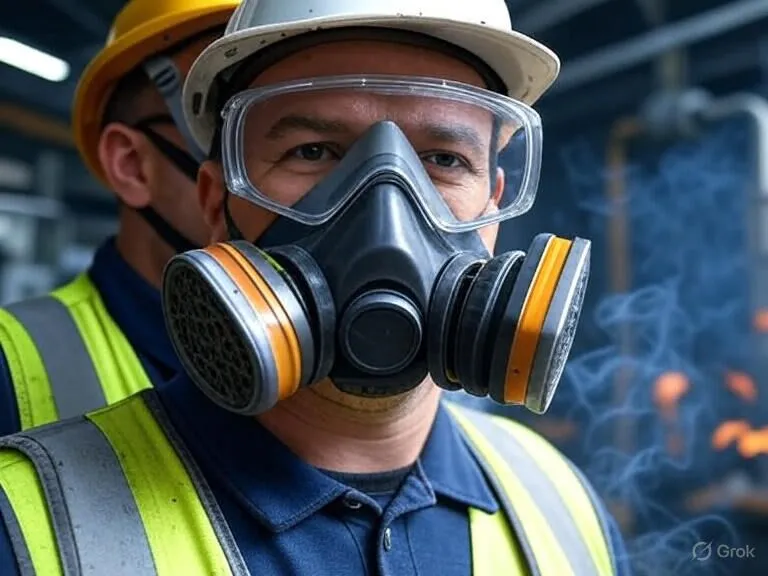Does your job involve the use of spray paint? Whether it’s painting cars, tractors, airplane fuselage panels, buildings, etc., you should be aware of the surrounding humidity levels. Even if the temperature in which you are spray painting is mild-to-moderate, excessively low or high humidity can affect the overall quality of your task, which is something we are going to discuss further in today’s blog post. In addition to humidity, considering the dew point—a more precise measure of air moisture—can help you determine the optimal conditions for spray painting and avoid issues caused by excess moisture.
Introduction to Spray Paint
Spray paint is a go-to solution for anyone looking to achieve a smooth, even finish on a wide range of surfaces. Whether you’re tackling a DIY project like refinishing furniture, restoring a car, or adding detail to a model railroad, spray painting offers versatility and convenience. However, getting professional results isn’t just about picking up a can and spraying away. Understanding the basics of paint application, how weather conditions like humidity and temperature can affect your paint job, and the importance of preparing your surface are all crucial steps. In this guide, we’ll walk you through essential tips and techniques for spray painting, so you can approach your next project with confidence and achieve the best possible results, no matter the surface or weather.
Prep Work for a Successful Paint Job
Proper prep work is the foundation of any successful spray painting project. Before you even think about picking up your spray paint, take the time to thoroughly clean and degrease your surface. Dirt, dust, and oils can prevent paint from adhering properly, leading to peeling or uneven coverage down the line. Once clean, sanding the surface helps create a smooth base for your paint to grip, which is especially important for glossy or previously painted surfaces. Applying a primer is another key step—this not only improves paint adhesion but also helps achieve a more vibrant, even coat. For wood or metal surfaces, using a rust-inhibiting primer can protect against corrosion and extend the life of your paint job. By investing effort in prep work, you set yourself up for a flawless finish that stands the test of time.
Humidity’s Impact On Spray Paint
Causes of dry air in the workplace relate to the percentage of moisture vapor in the air compared to the amount needed for total saturation. If the relative humidity is 33%, for example, the air is roughly one third full. If the relative humidity is 100%, the air is completely saturated to the point where it can hold no more. Employees who work jobs that require them to use spray paint should pay close attention to all this, as it can affect their job in more ways than just one. Environmental factors such as wind, sun, rain, heat, cold, and temperatures all play a role in the spray painting process.
While each and every scenario is different, spray painting is typically best done in environments with a relative humidity of 40-50%. Morning is often the best time to spray paint due to lower humidity and moderate temps, and waiting for the right weather conditions is crucial. When the relative humidity level drops below 30%, problems begin to arise, one of which is the simple fact that paint dries increasingly fast at this level. You have to remember that the speed at which paint dries is directly influenced by the level of airborne moisture vapor and temperature. When there’s not enough moisture vapor in the air, the paint will evaporate into the air in an attempt to create a balanced atmosphere. This can pose serious problems for workers who are trying to create an even, consistent spray paint job, especially if the paint is sprayed in windy or cold conditions, which can further affect drying and adhesion.
High humidity can be equally as problematic for workers attempting to spray paint a surface. Humid conditions can significantly affect drying time and paint adhesion. As the humidity rises, it will take longer and longer for paint to dry. Depending on just how high the humidity rises, some paint may never dry, which of course is a severe problem for businesses that perform spray painting services. If the paint never dries, you won’t be able to touch, let alone move/ship, the painted object. This can happen if humidity is not controlled, leading to ruined finishes and wasted materials. For example, in regions like South Florida, the warm and humid climate requires special attention to timing and methods for spray painting. Summer often brings more predictable conditions for spray painting, but can also present challenges with high humidity. Painting at night can be problematic due to temperature drops and increased humidity, which slow down drying and can cause defects. Always avoid spray painting during rain to prevent moisture-related issues.
Ideal Spray Painting Environment
A good rule of thumb is to maintain a 40-50% relative humidity in the area where you intend to spray paint. This is a stable environment that’s not too dry but not overly saturated either. Humidity can be monitored and controlled through the use of a commercial-grade humidifier, such as the ones offered here at SmartFog.com The bottom line is that you need to keep tabs on the relative humidity of your workplace.
Maintain Humidity Levels With Smart Fog Products
Achieving a flawless spray painting finish often comes down to controlling the environment, especially humidity levels. High humidity can cause paint to dry slowly, resulting in a sticky or uneven surface, while low humidity can make paint dry too quickly, leading to rough textures or poor adhesion. Smart Fog products are designed to help you maintain the ideal humidity level—typically between 40-50% relative humidity—for spray painting. By using a humidifier or dehumidifier, you can control the moisture in the air, ensuring your paint dries at the right rate for a smooth, professional finish. Whether you’re working in a garage, paint booth, or any controlled environment, Smart Fog solutions make it easy to create the best conditions for your next paint job.
Common Mistakes to Avoid in Paint Application
Even experienced DIYers can run into trouble with spray painting if they overlook a few common pitfalls. One frequent mistake is applying a single thick coat of paint, which can lead to drips, runs, and uneven coverage. Instead, always use thin coats, allowing each layer to dry completely before adding the next. Another issue is painting in direct sunlight or in a hot environment, which can cause the paint to dry too quickly and result in an uneven finish. Whenever possible, avoid painting in direct sunlight and opt for a shaded area or a paint booth where you can control temperature and lighting. Humid or windy weather conditions can also affect your results, causing issues like orange peel texture or dust settling on wet paint. To avoid these problems, check the weather forecast and aim to spray paint when conditions are mild and stable. By steering clear of these common mistakes, you’ll achieve a smooth, durable finish every time.
Conclusion on Spray Painting
Spray painting is a powerful technique for achieving a professional finish on a variety of surfaces, from wood and metal to plastic and more. By mastering the basics of paint application, understanding how weather conditions and humidity levels affect your results, and dedicating time to proper surface preparation, you can ensure your paint job looks great and lasts. Always remember to follow safety guidelines, such as wearing a mask and working in a well-ventilated area, and don’t rush the process—patience and attention to detail make all the difference. With the right approach and a little practice, you’ll be able to tackle any spray painting project with confidence, creating beautiful, long-lasting results every time.
Maintain Humidity Levels With Smart Fog Products
Trust the humidification experts at Smart Fog to set you up with a commercial humidifier to accommodate your space for spray painting. Contact us today for a free quote!



